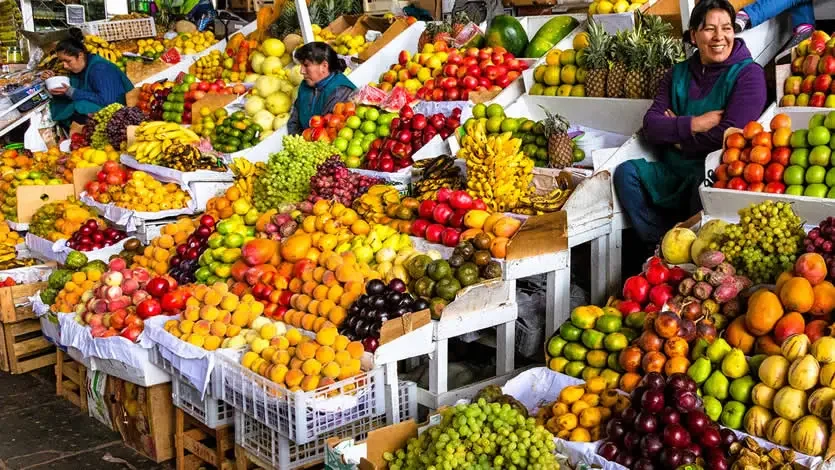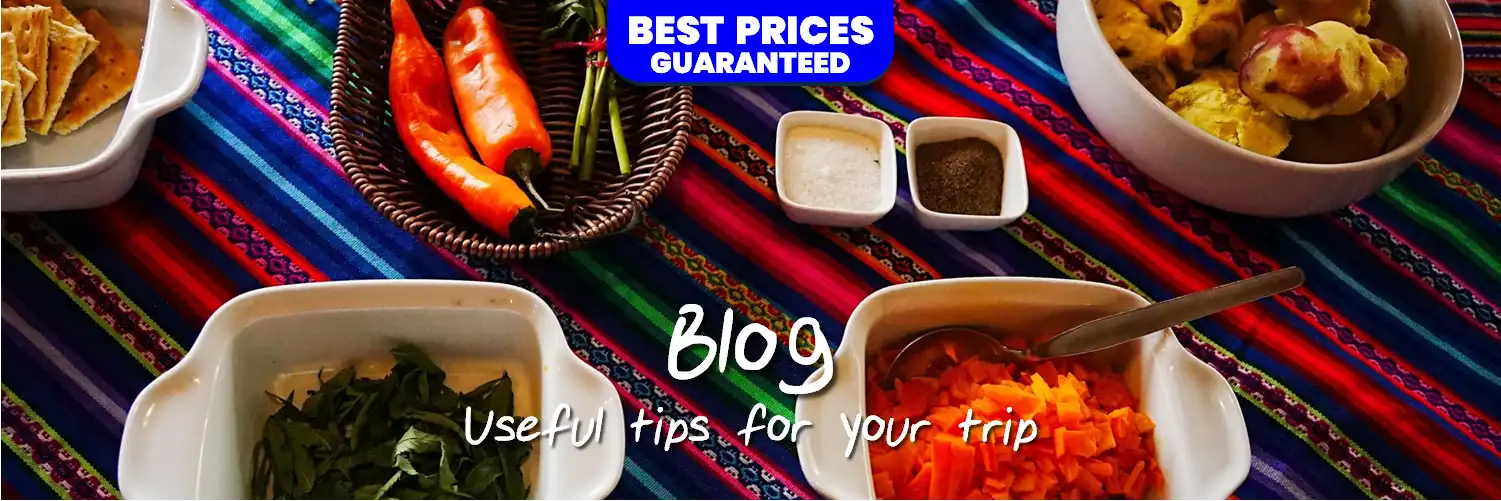Tropical Fruits in Peru: A Backpacker’s Guide to Exotic Flavors

Introduction: Peru beyond ceviche and Machu Picchu
When you think of Peru, chances are Machu Picchu, ceviche, or maybe the Rainbow Mountain trek comes to mind first. But there’s another side of Peru that travelers often overlook: its tropical fruits. Thanks to its incredible biodiversity and diverse climates —from desert coast to high Andes and the lush Amazon rainforest— Peru produces exotic fruits that you’ve probably never seen or tasted before.
Exploring Peru is also about discovering these hidden gems of nature. Local markets are bursting with vibrant colors, intense aromas, and juice stalls blending these fruits into fresh smoothies. This guide will help you uncover the most unique Peruvian fruits, where to try them, and why they should be part of your travel experience.
1. Lucuma: the “gold of the Incas”
A unique flavor
Lucuma is perhaps the most iconic Peruvian fruit. With a bright yellow pulp and a dry, sweet taste, it’s not usually eaten fresh but turned into ice creams, mousses, and smoothies.
Cultural importance
Known as the “Incas’ fruit,” it was depicted in ancient ceramics and cultivated for centuries along the coastal valleys.
Where to try it
Lucuma ice cream in artisan shops in Lima or Cusco.
Juice stalls in Surquillo Market (Lima) or San Pedro Market (Cusco).
Classic desserts: suspiro a la limeña with lucuma, lucuma mousse.
👉 Backpacker tip: order a mixed juice with lucuma — it blends perfectly with tropical fruits.
2. Cherimoya: Peru’s custard apple
Soft, creamy, and naturally sweet, cherimoya feels like eating a natural custard with seeds.
Where to try it
Fresh in local markets like Cusco’s Central Market.
As juice with milk — a common Peruvian way to enjoy it.
In yogurts, ice creams, and cakes.
👉 Backpacker tip: eat it with a spoon, straight from the fruit.
3. Soursop (Guanábana): a tropical refreshment
Large and green with a spiky skin, soursop has a fibrous white pulp and a flavor balancing sweetness and acidity.
Where to try it
Fresh juices in Lima juice stalls.
Straight from the fruit in Amazonian towns like Iquitos or Tarapoto.
👉 Backpacker tip: mix it with milk for one of Peru’s most refreshing drinks.
4. Camu Camu: Amazonian vitamin bomb
Tiny, red-purple, and super sour, camu camu contains up to 60 times more vitamin C than an orange.
Where to try it
Amazon markets (Iquitos, Pucallpa).
Fresh juices and local energy drinks.
👉 Backpacker tip: combine with strawberry or mango juice to balance the acidity.
5. Granadilla: passion fruit’s sweet cousin
Crack open its orange shell and scoop out the sweet, jelly-like pulp with a spoon. Easy to eat and loved by Peruvians.
Where to try it
Sold everywhere, from markets to bus stations.
Perfect snack during long bus rides.
👉 Backpacker tip: granadilla is mess-free, ideal for traveling days.
6. Pacae: the “ice cream bean”
Looks like a giant green bean pod, inside you’ll find black seeds wrapped in fluffy, cotton-like sweet pulp.
Where to try it
Andean markets (Cusco, Ayacucho).
Seasonal street vendors.
👉 Backpacker tip: don’t be shy if someone offers it — locals love sharing it with travelers.
7. Golden Berry (Aguaymanto)
Small, golden-orange, wrapped in a dry husk, with a tangy-sweet taste.
Where to try it
In Cusco or Cajamarca markets.
As jams, desserts, or gourmet toppings.
👉 Backpacker tip: pair aguaymanto with Peruvian chocolate.
8. Tumbo: the Andean passionfruit
Elongated and acidic, tumbo is used for juices, ice creams, and even fermented drinks (chicha de tumbo).
Where to try it
San Pedro Market in Cusco.
Ice cream stalls in Andean villages.
9. Pepino Melon
Yellow with purple stripes, juicy and mild — like a refreshing cucumber-flavored melon.
Where to try it
Sierra markets.
Great to carry on hikes in the Sacred Valley.
10. Where to taste Peru’s tropical fruits
Unmissable markets
Surquillo Market (Lima): huge variety of fruit and juice stalls.
San Pedro Market (Cusco): cheap, fresh fruits and juices.
Belén Market (Iquitos): wild Amazonian fruits like camu camu and aguaje.
Juice stalls (juguerías)
Every market has dozens of juice stalls where you can mix fruits with milk or water. Prices are usually $1–2 USD, and you can choose your own blend.
11. Traveler’s tips
Prices: most fruits cost 1–3 soles in markets.
Seasonality: not all fruits are available year-round (lucuma is best in summer).
Hygiene: wash fruits or ask vendors to prepare them fresh.
Cultural tip: Peruvians start their day with fruit juices — join in!
Conclusion: a flavor journey through Peru
Trying Peru’s tropical fruits is more than a culinary adventure — it’s a cultural one. Each bite of lucuma, cherimoya, camu camu, or granadilla connects you with centuries of tradition and the biodiversity of this country.
So next time you’re in Peru, don’t just stop at ceviche and pisco sours. Walk into a market, order a juice mix, snack on a granadilla, or savor a lucuma ice cream. Your taste buds will thank you, and your travel story will be richer.


